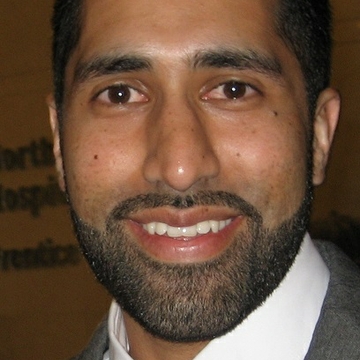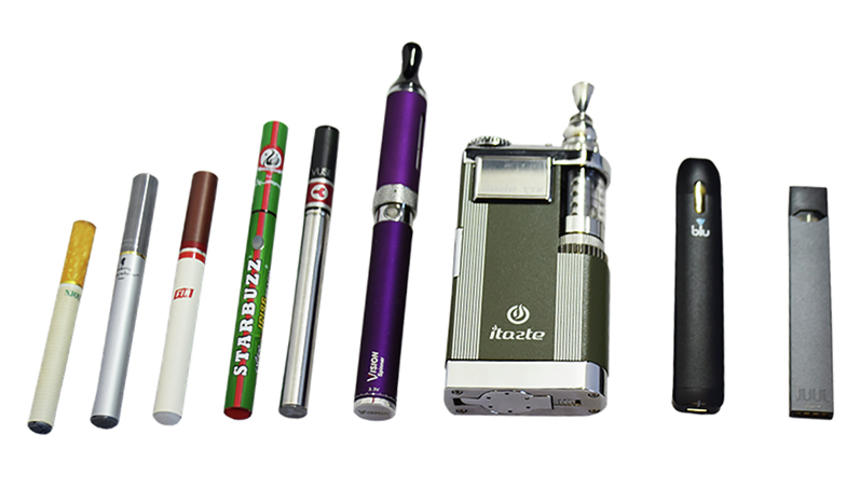New Mexico Approves Master of Science in Anesthesia Program at UNM

Clouds of Confusion
Epidemic of Teen Vaping Gives Cause for Concern
Here's the good news: cigarette smoking among high school students is at record lows. The bad news is teens are taking up vaping in alarming numbers, apparently in the belief that it poses no health risks.
When the first vaping devices were introduced a dozen years ago, "It was touted by the medical community as a great way to quit smoking," says Shawn Sidhu, MD, an assistant professor in the UNM Department of Psychiatry & Behavioral Sciences. "You can hear vaping is better than cigarettes and equate that in your mind that vaping is safe."
That's a serious misunderstanding, says Sidhu, who specializes in treating children and adolescents and frequently takes to social media to underscore the health risks vaping poses. Nicotine, the active ingredient in most vaping formulations, "is one of the most addictive substances on the planet," he says.
A new study from University of Michigan researchers drawn from an annual survey of nearly 14,000 students, found that 21 percent of high school seniors had vaped nicotine in the past 30 days, a 10 percent increase over the previous year's study.
By comparison, only 3.6 percent of seniors reported having smoked tobacco in the previous 30 days, reflecting a two-decade-long decline in cigarette smoking among teens, according to the study, published Monday in The New England Journal of Medicine.
While vaping avoids many of the toxic cancer-causing chemicals created by burning tobacco, it still exposes users to many other compounds whose health effects are poorly understood, Sidhu says.
Emerging research suggests there are hazards associated with nicotine use, even in the absence of smoking, as well as vaping more generally, Sidhu says. For example, nicotine is known to cross the placenta, "so if a mom is pregnant is smoking while she's pregnant without even knowing she's pregnant, it will cross the placenta and affect the fetus," he says.
Prenatal exposure to nicotine predisposes young children to sudden infant death syndrome and changes in brain function. It's well documented that children exposed before birth to tobacco smoke suffer from higher rates of attention deficit/hyperactivity disorder.
Nicotine also stiffens the lining of the blood vessels and raises the long-term risk of developing a cognitive disorder, Sidhu says. And while it is not believed to directly cause cancer, nicotine may promote tumor growth by causing thousands of mutations in cells.
Vaping presents its own set of risks, meanwhile. The aerosolized chemicals inflame the lining of the lungs, hampering their ability to expel foreign substances. "We're probably going to find out a lot about this in the coming years, and unfortunately, coming decades," Sidhu says.
Teens start vaping in the first place in part because of flavored nicotine formulations, and in part by cleverly designed vaping pens. But a single Juul pod contains as much nicotine as 20 cigarettes, Sidhu says, and it's easy to become hooked without realizing it. "I think the kids don't realize how addictive nicotine is.
The popular Juul device resembles a USB fob, for example. The rising tide of teen vaping has led the Food & Drug Administration and U.S. Surgeon General to warn manufacturers against targeting youngsters in their marketing campaigns, Sidhu says.
Because it doesn't create smoke, parents and teachers may not realize when teens are vaping. "You can't smell it sometimes, or when you can, it might not smell like tobacco smoke," Sidhu says. "The first thing is talking to your kids about it, opening a dialogue about it, taking an interest in your kids, knowing what they're doing and who they're hanging out with."
Schools and health care providers also have an important role to play in educating young people about the dangers of vaping. "If it's an epidemic," Sidhu says, "we all need to think about how we play a role in addressing it."
